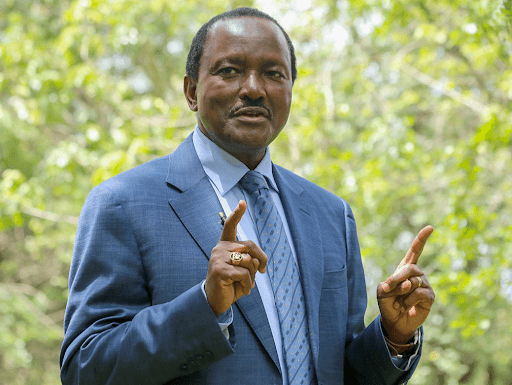The history of devolution in Kenya can be traced to the 1963 independence constitution through the “Majimbo” or regional governance system.
Nevertheless, the Kanu-led independence government rolled back the strong system of devolution as the Senate, regional governments and regional assemblies were dissolved. This sounded the death knell of devolution and decentralisation, which led to the consolidation or centralisation. power and authority under the all-powerful Presidency.
The promulgation of the 2010 Constitution breathed a new lease of life to devolution. This is articulated in Chapter 11 of the Constitution running through from Articles 174 to 200. Subsequently 47 county governments were created.
There are 14 functions of the county governments provided for In Article 186 and assigned in the Fourth Schedule of the Constitution.
In summary the functions include agriculture, fisheries, health services, pharmacies, ambulance services, control of air pollution, cultural activities, county transport, including county roads (Class D, E and Unclassified Roads), and ferries and harbours, animal control and welfare, trade development and regulation, local tourism, and cooperative societies.
County planning and development, pre-primary education (ECD), village polytechnics, home craft centres and childcare facilities, soil and water conservation, and forestry. Other are county public works and service, fire fighting services and disaster management and control of drugs and pornography.
According to the Division of Revenue Act (2021) on an equitable revenue, the counties received Sh370 billion in 2021-22. This is in addition to revenue internally generated to perform the functions aforementioned.
Based on reports from the United Nations Development Programme in Kenya, devolution has progressively shaped the way resources are allocated to meet priorities of communities within the jurisdiction of the 47 county governments.
Similarly, the administrative processes at the county level have progressively improved, enabling the establishment of systems and processes that seek to govern in the long-term the realisation of the objectives of devolution at the national as well as the county levels.
Overall, the progress on devolution has been substantial but a lot remains to be done, especially for counties In the Arid and Semi-Arid Lands. These areas are marked with marginalisation, low infiltration of infrastructure, structural and other socio-economic challenges and their geo-location with respect to the climatic zones of the country has made them and their inhabitants particularly vulnerable.
In reflection, 10 years since the promulgation of the Constitution, it is time for an audit.
The review should take cognizance of the different circumstances in each county in terms of governors at the helm. Quick analysis of the changes will suffice.
Nyeri county has had four governors, followed by Nairobi, Kiambu, Bomet with three governors in the last 10 years.
From 2013 to 2022, there were pioneer governors who served for two terms in Mombasa, Kwale, Kilifi, Kakamega, Busia, Homabay, Siaya, Migori, Murang’a, Embu, Kisii, Turkana, Machakos, Makueni, Narok, Elgeyo Marakwet, Uasin Gishu, Samburu, Mandera, Kericho, Trans Nzoia and Nyamira. This represents 47 per cent of the counties and an indication of mixed governance and electoral results countrywide.
The other category is that of return pioneer governors in the counties of Laikipia, Bungoma, Kitui, Wajir, Lamu, West Pokot, Baringo and Garissa.
There are also continuing governors who took over in 2017 after the pioneers’ one term. They are the governors of Kisumu, Kirinyaga, Tharaka Nithi, Nandi, Marsabit, Tana River, Vihiga, and Kajiado,
There were governors who served for one term since 2017 and rejected in 2022 in Meru, Nakuru, Nyandarua, Taita Taveta, and Isiolo counties.
The above dynamic scenarios represent results worth further analysis. This should begin with an overall audit that should assess the following parameters, among others.
First, establish whether the 47 per cent (22) of governors with two consecutive terms have performed better than the 53 per cent (25) that had intermittent leadership over the period.
Second, have the remaining 53 per cent second tier governors made any significant differences in their respective counties in terms of service delivery?
Third, has devolution overall specifically achieved service delivery targets in the devolved functions earlier outlined?
Fourth, what are the underlying reasons why these targets have not been achieved and what intervention mechanisms should be put in place?
Fifth, who have been the beneficiaries of these services? Could it be specific wards where governors hailed from?
Six, which of the devolved functions have been successful and what are the underlying reasons?
Seven, why have the counties in the ASAL areas lagged behind despite additional funding directed there?
Eight, how does the country get a remedy to the perennial changing of public service heads at the county at every election cycle? At the national level, there is continuity in the public service in terms of governance.
Based on history, the audit might indicate devolution has yielded mixed results. This can only be successful, if the leadership at the national and county governments support the same.
The self-introspection should be welcomed by the governors though their umbrella, the Council of Governors. The lessons learnt should be taken on board. If they disregard them, they shall be judged harshly by their employers — the people of Kenya — at the next polls.
Dr Njau Gitu is an educator practising as a governance and public policy adviser.
@GNjauGitu










